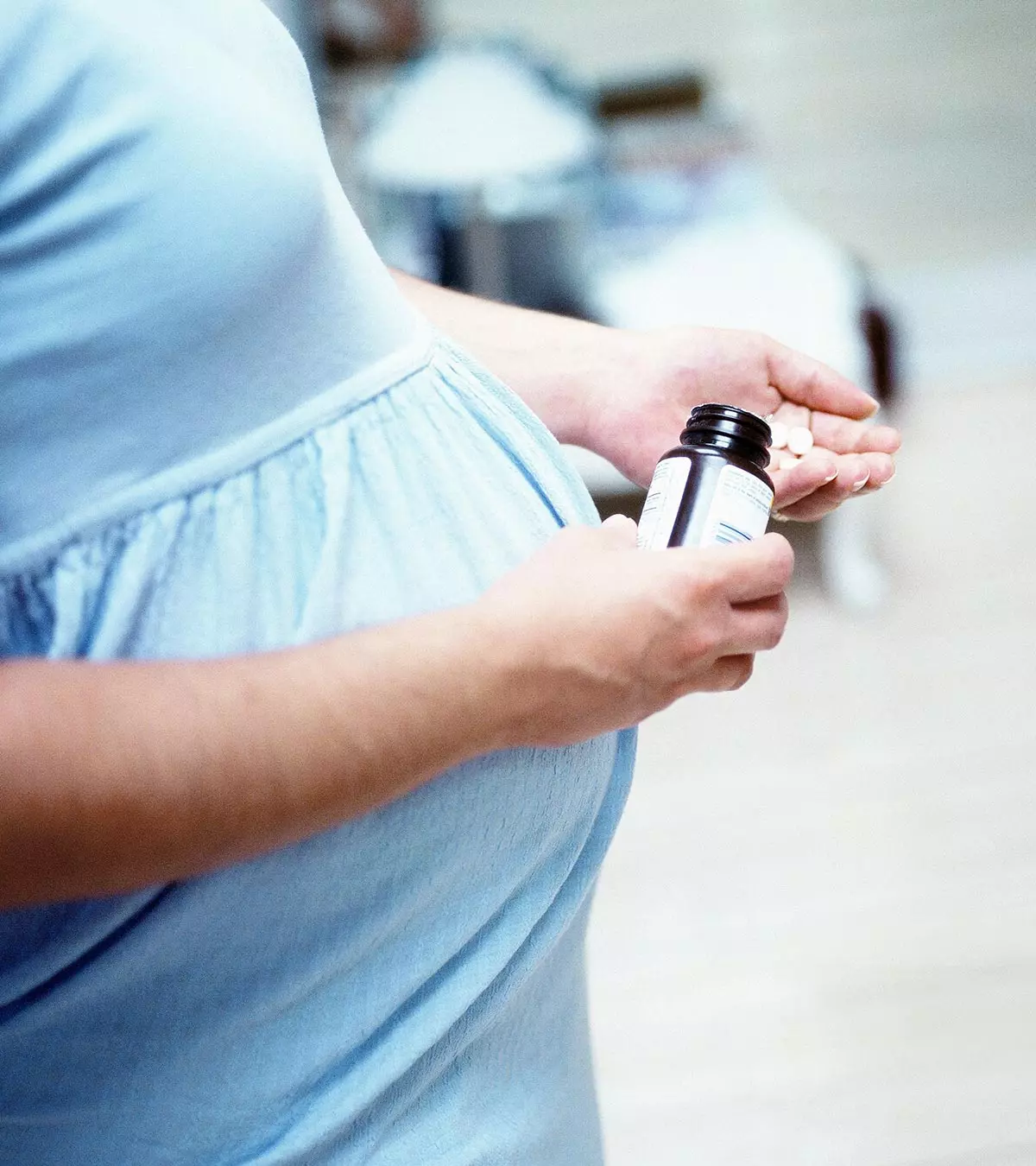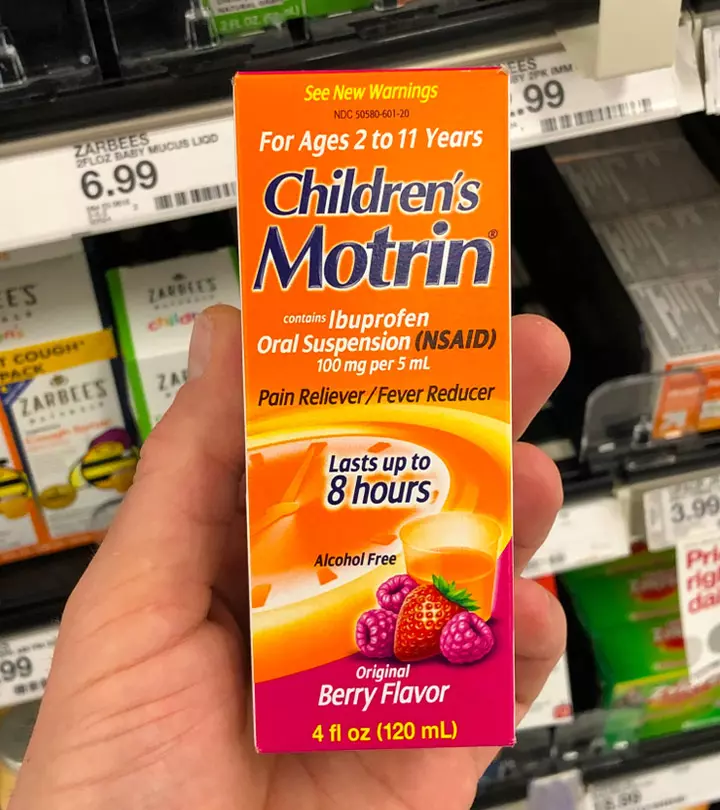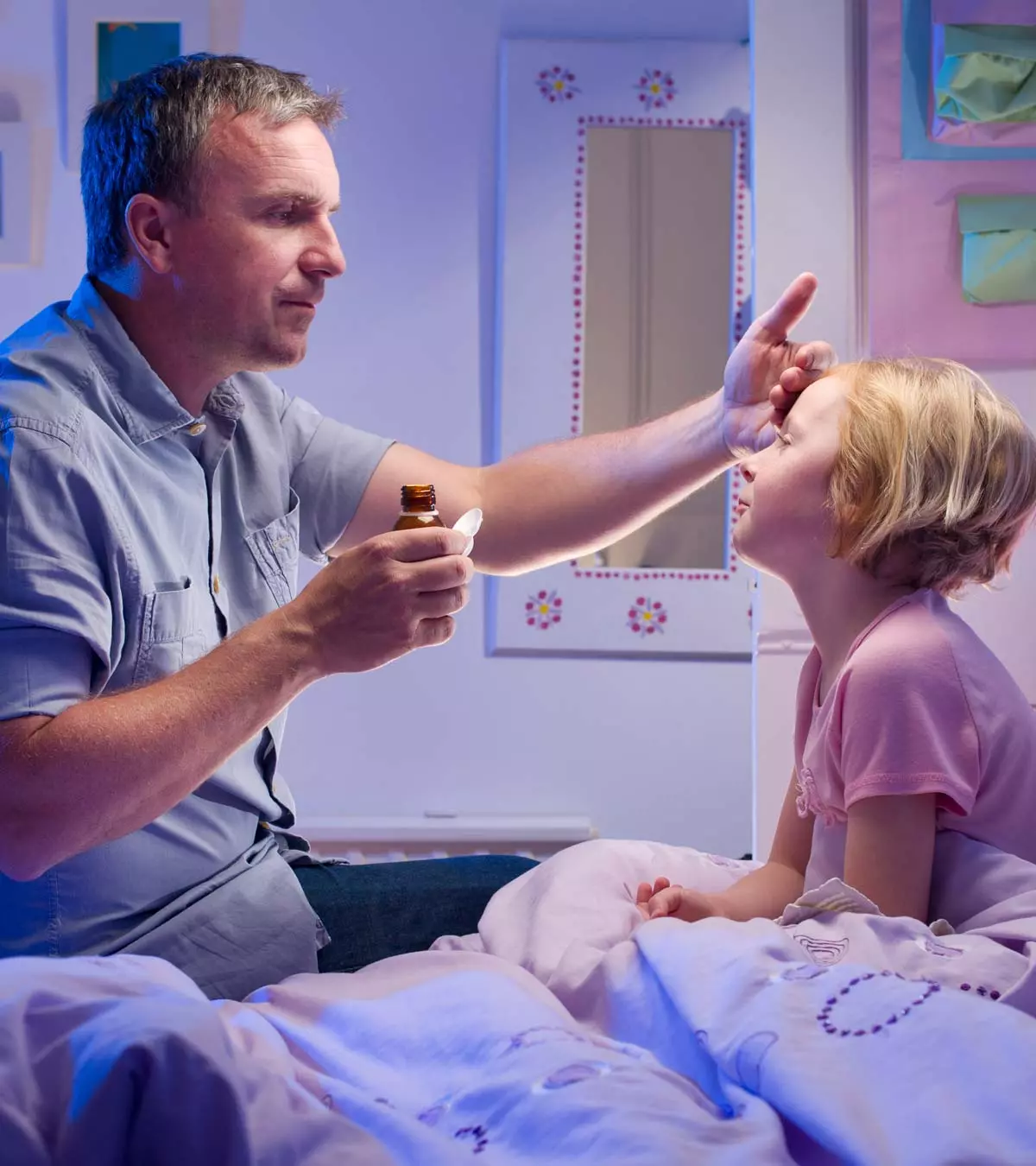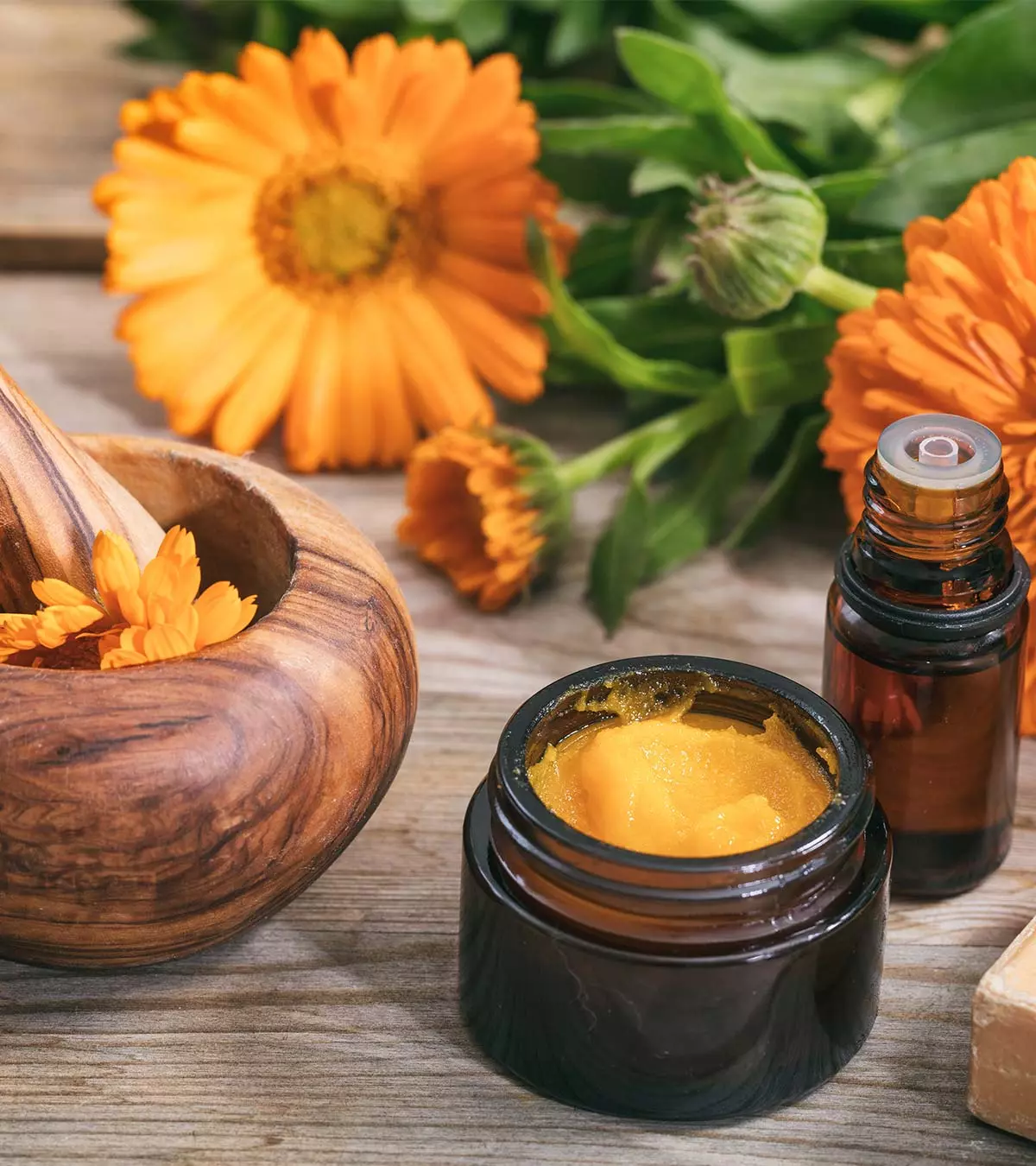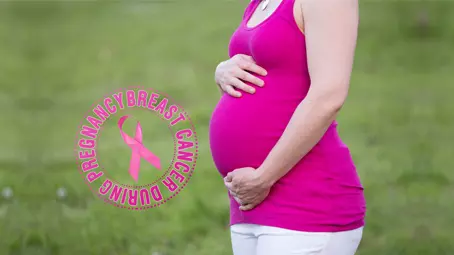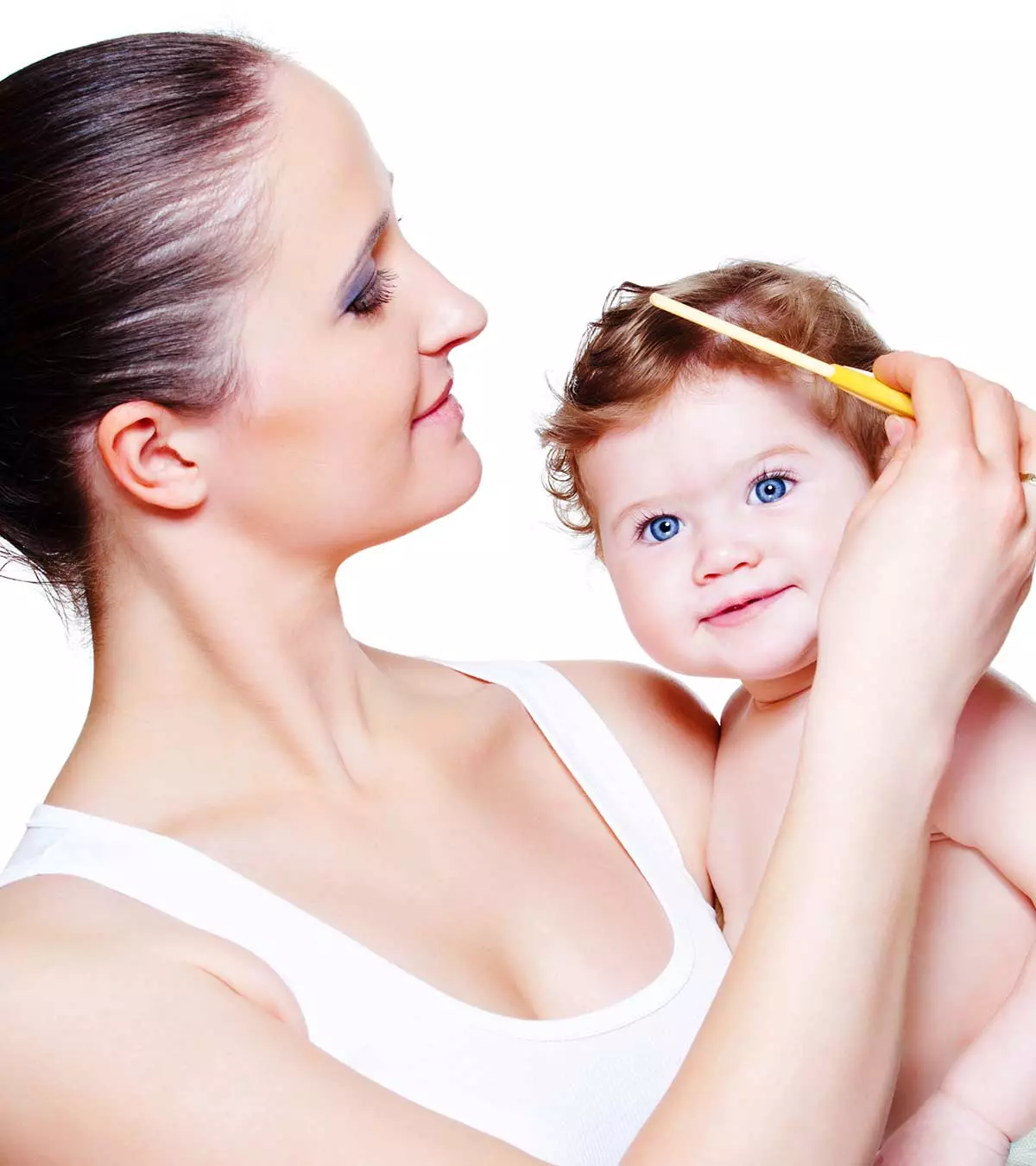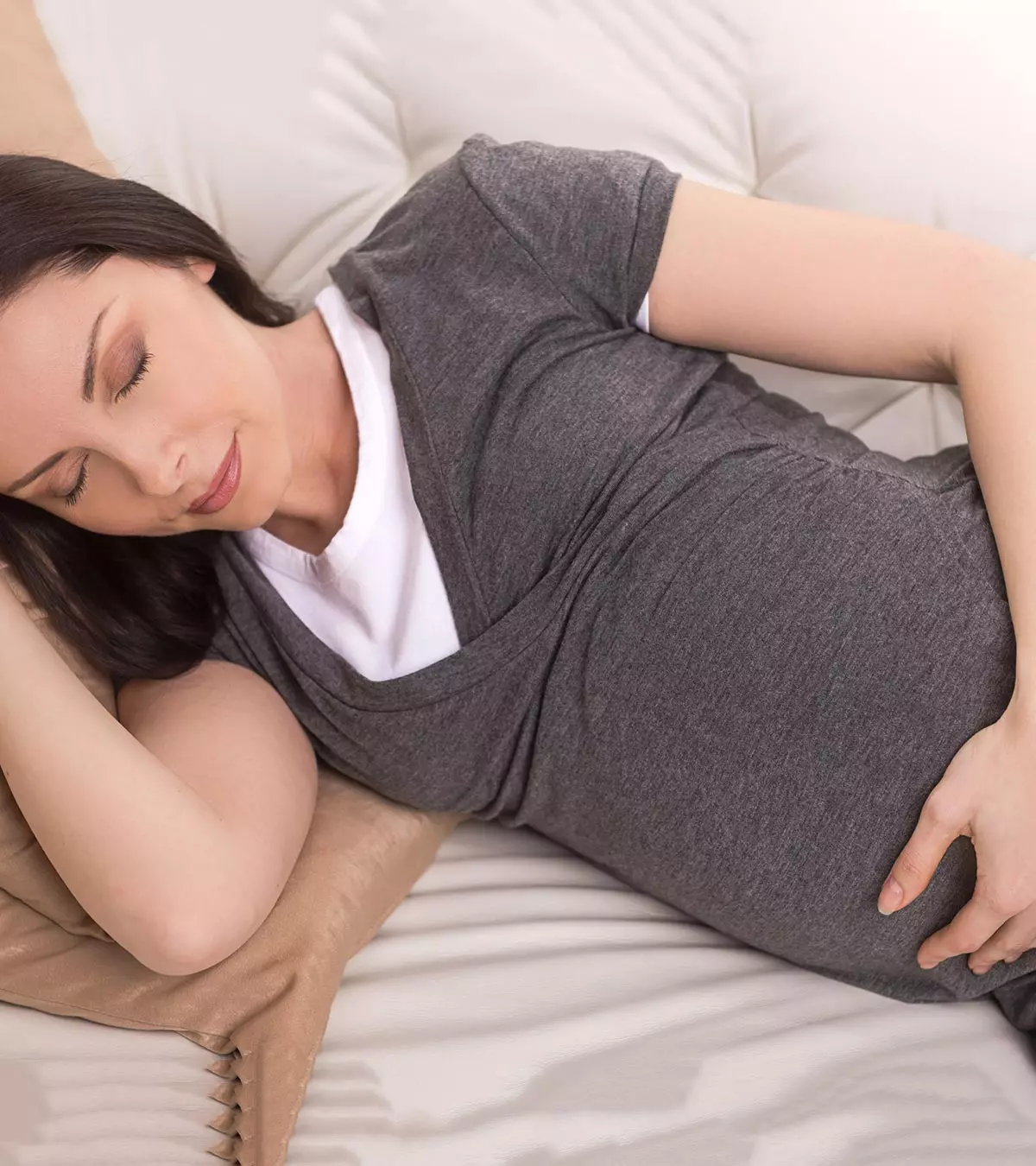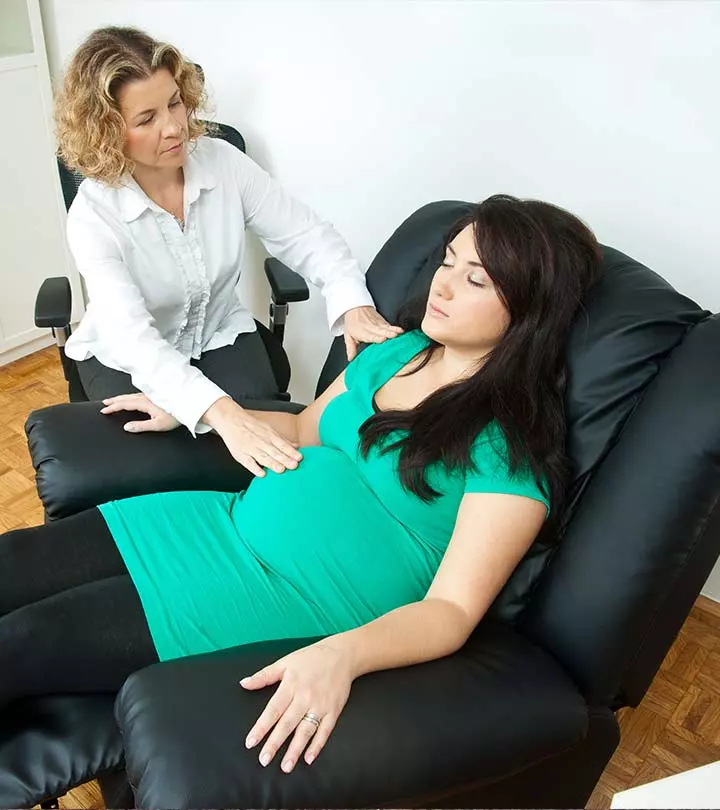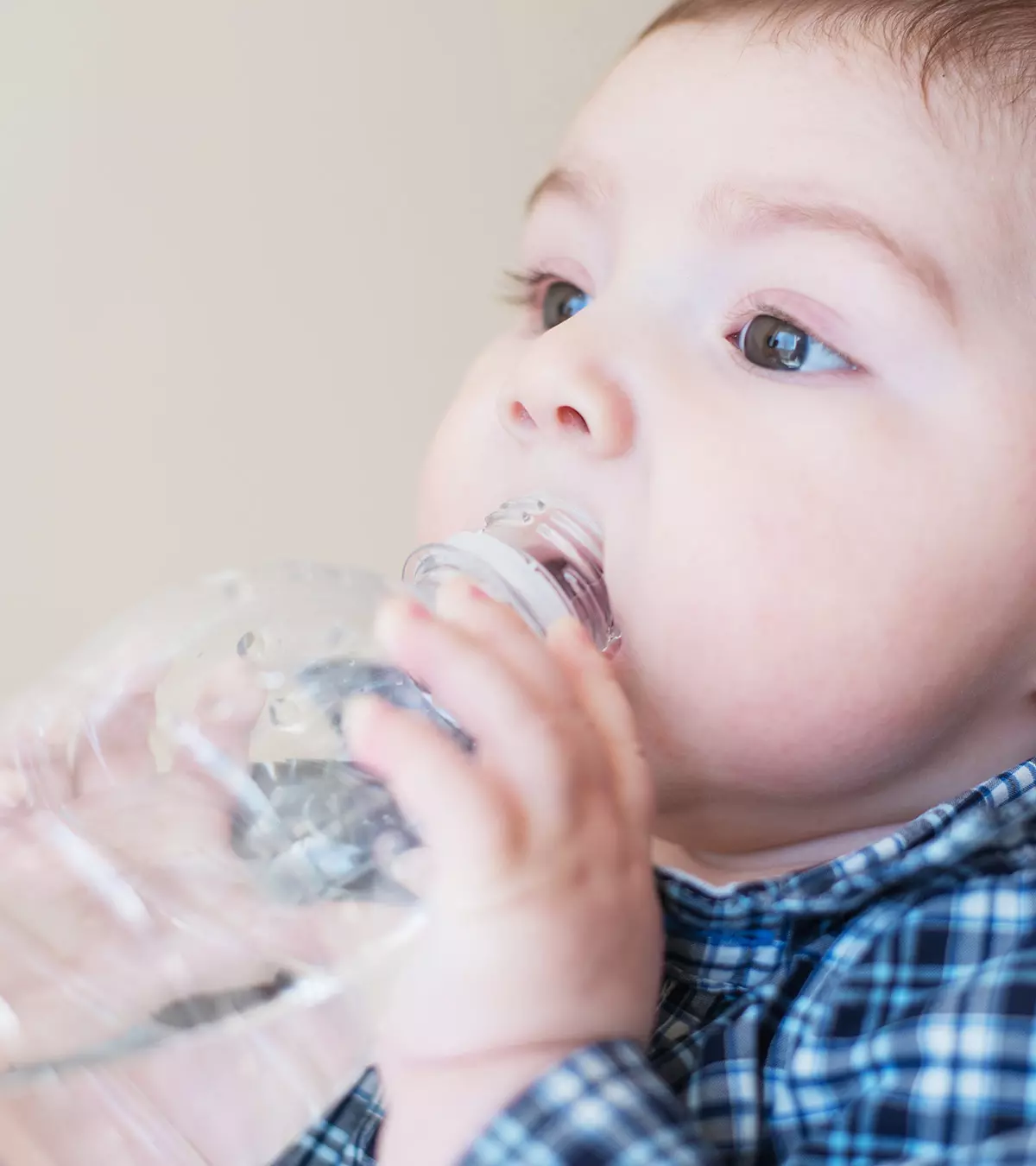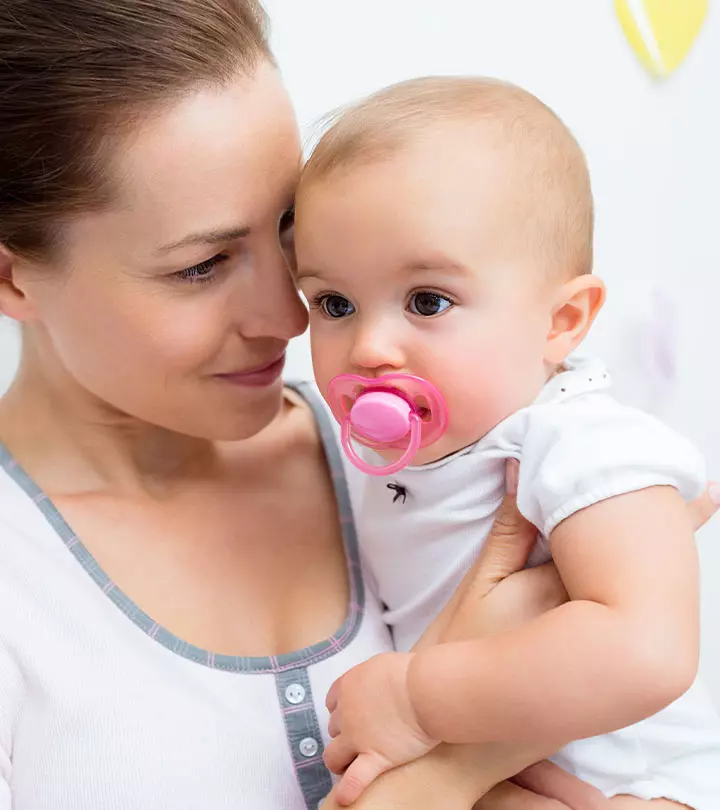
Image: Shutterstock
Pacifiers are the most sought-after tools when it comes to calming babies down. Baby pacifiers are also known to reduce the risks of sudden infant death syndrome (SIDS). This is because these objects help newborns satisfy their natural sucking reflex and soothe them. But parents need to ensure that they introduce their baby to the pacifier at the right age and also wean them off it at the correct time. But is it right to let a baby suck on the pacifier for long periods? Read on to know more about the pros and cons of pacifiers and when you should stop giving them to your infant.

Key Pointers
- The American Academy of Pediatrics (AAP) recommends a one-piece pacifier for infants.
- Pacifiers can relieve colic, soothe the baby, alleviate pain, and help normalize air pressure during air travel.
- Pacifiers can also benefit premature infants by exercising their sucking reflex and aiding digestion.
- However, introducing a pacifier early (within the first month) can lead to nipple confusion and reduced breastfeeding frequency.
- Long-term use of pacifiers can also interfere with breastfeeding and impact an infant’s dental and oral health.
What Is A Baby Pacifier?
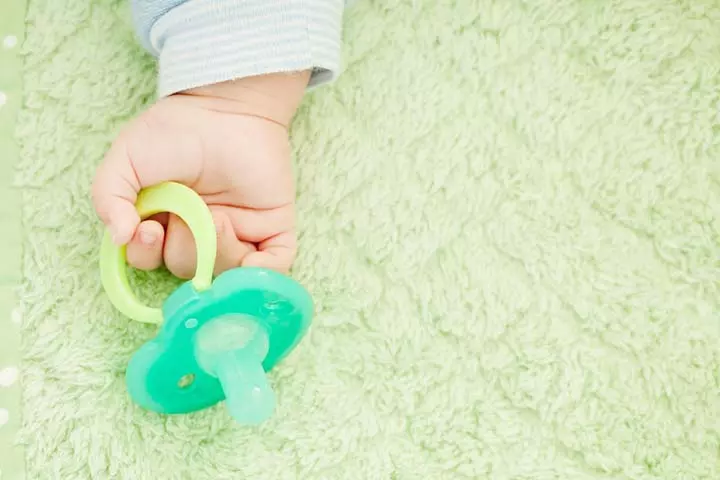
Pacifier, also called soother, dummy, or teether, is a small, nipple-shaped silicone or rubber accessory that is put in the baby’s mouth as a gum massager or to soothe him. It has several other informal names such as binky in American and nookie in Canadian English. Babies have a natural sucking reflex, which helps suckle from the breast (1). Since an orthodontic pacifier resembles a nipple, a baby can be calmed and made to feel secure, while also functioning as a teething toy. It is for this reason that babies take to pacifiers quickly.
Pacifiers are available in numerous designs. But, the American Academy of Pediatrics (AAP) recommends a one-piece pacifier, where the nipple, mouth guard, and handle are all carved out of a single piece of plastic (2).
You may take note of the below points while choosing a pacifier:
- Pacifiers come in different sizes for different age groups. Therefore, you need to select the right one based on your baby’s age. For example, a toddler-sized pacifier would be too big for an infant; and an infant-sized pacifier too small for a toddler. Additionally, parents can choose from a variety of materials and designs to suit their baby’s preferences and needs. Options include silicone, rubber, and orthodontic choices, allowing them to find the most comfortable fit for their baby.
- Single-piece pacifiers with a hole are the best as they allow circulation of air and prevent rashes around the mouth.
 Quick tip
Quick tipWhat Are The Pros And Cons Of Pacifiers?
Let’s first see the advantages of pacifiers before knowing their disadvantages.
Advantages of a pacifier:
- Reduces SIDS: Sudden infant death syndrome or SIDS is the unexpected death of a healthy baby. SIDS can happen anytime, especially during sleep, as the baby may suffocate due to excess bedding or when in an incorrect sleeping position.
According to the Centers for Disease Control and Prevention (CDC), in the US, there are approximately 40% of cases of SIDS every year, with the majority of cases occurring in infants under the age of one. Experts assert that the use of a pacifier reduces the chances of SIDS as it helps open airways wider and lets the infant breathe better (1). The AAP states that giving a pacifier to a baby before he falls asleep, significantly brings down the risk of SIDS (3).
 Point to consider
Point to consider- May help relieve colic: The sucking reflex brings a sense of security and enables the baby to self-soothe. Parents can try pacifiers to control the repeated bouts of colic in a baby (4).
- Works as a distraction: There are times when the baby is just fussy, and no solution works. Pacifiers could relieve the fussiness by working as a distraction and relief (5).
- Pain relief: The pacifier is known to alleviate pain in babies undergoing invasive procedures such as lumbar puncture, catheter insertion, and even immunization. It is not known how a pacifier helps, but it is believed that the stimulation of sucking reflex relieves pain. For this reason, it is recommended that babies be given a pacifier before any invasive medical procedure is conducted.
- Helpful during air travel: Parents dread traveling by air with their baby as the abrupt changes in air pressure during flight makes the little one’s ears go pop. The eerie sensation makes babies uncomfortable eventually causing a crying outburst. A pacifier is helpful in keeping the infant’s mouth engaged with the sucking reflex, which normalizes the air pressure in the ear (6).
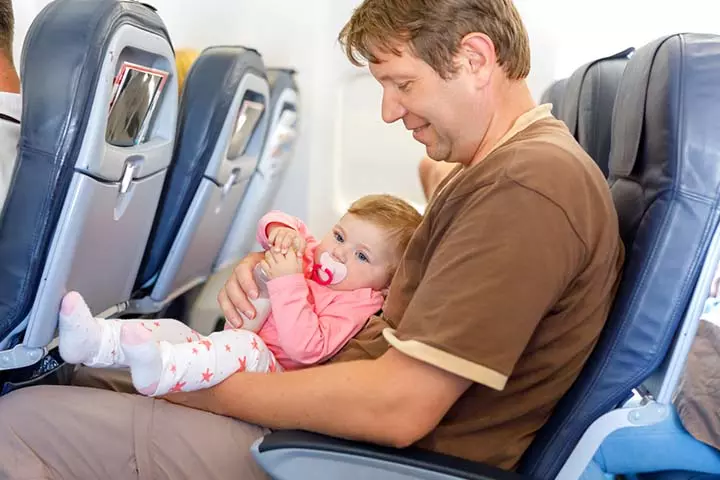
- Benefits the preterm infant: Premature babies have poor sucking reflex due to incomplete physical development. Research shows that non-nutritive sucking, using a pacifier, helps a preterm infant improve the sucking reflex, which is vital for breastfeeding (7). Exercising the sucking reflex has also been observed to support digestion in premature babies.
- Avoids early cessation of breastfeeding: A study has found that the pacifiers may help the mothers, who have a high risk for depression, to continue exclusive breastfeeding for a longer duration (8).
With the advantages done, let’s take a quick look at how pacifiers could be disadvantageous.
Disadvantages of pacifiers:
- Interference with breastfeeding: Introducing a pacifier early (within the first month) can lead to nipple confusion, where the infant is confused between the nipple of a breast and pacifier. If a newborn constantly uses pacifier he would not suckle the breast nipple properly. A study has found that babies who are introduced to a pacifier early are breastfed less frequently by their mothers (9). This interference is observed in full-term infants, and is different from preterm infants where pacifiers are used to exercise the sucking reflex.
- Impact on dental and oral health: Long-term pacifier usage can affect the baby’s dental health. Those who use pacifiers beyond the age of four years display adverse effects like misalignment of permanent teeth. Babies who use sugar or honey-dipped or flavored pacifiers are at a higher risk of dental caries and oral infections (10).
- Risk of ear infections: Contaminated and unclean pacifiers can transfer bacteria from the mouth to the middle ear, leading to an ear disease called otitis media. Studies have found a higher recurrence of ear infections in babies who use a pacifier (11).
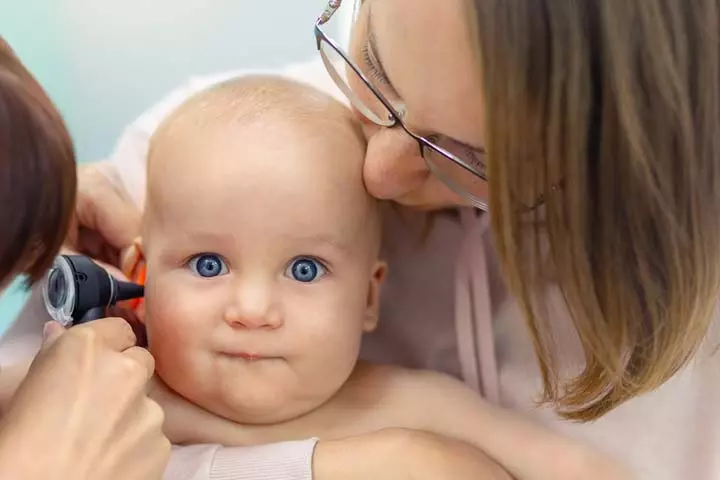
Pacifiers have their share of detrimental effects, but the advantages outweigh the disadvantages.
Harmful effects are also subject to conditions:
| Ear infections | Happen due to poor hygiene |
| Dental problems | Occur when the baby uses a pacifier beyond the age of four years |
| Problems with breastfeeding | Happen when the baby is given a pacifier before he completes the first month |
The AAP states that there is limited evidence to blame pacifiers alone for troubled breastfeeding (12). The American Academy of Family Physicians (AAFP) also asserts that it is unclear if pacifiers are bad for infants (13).
In the absence of concrete evidence, we can say the benefits of a pacifier outweigh its drawbacks.
Should A Baby Be Given A Pacifier?
Yes, you can give the baby a pacifier, since you have now known that pacifiers have several proven benefits. Keep in mind the below points while introducing a pacifier.
- Age of the baby: The baby should be at least four weeks old (almost one month) before you introduce him to a pacifier. By four weeks, breastfeeding is established, and thus a pacifier will not interfere with the process.
- Does my baby need a pacifier?: If the baby uses a breast as a pacifier, then perhaps he needs more time with sucking reflex to soothe himself. Pacifiers make a good alternative for keeping the baby latched to the breast for soothing (1). If the baby won’t take a pacifier, then it is okay. Attempt again, but if there is a stiff resistance, then perhaps it is better to give a pacifier a pass.
Remember, it is finally your decision whether or not to give a pacifier to your baby. But in some cases it is a clear no.
When Should You Avoid A Pacifier?
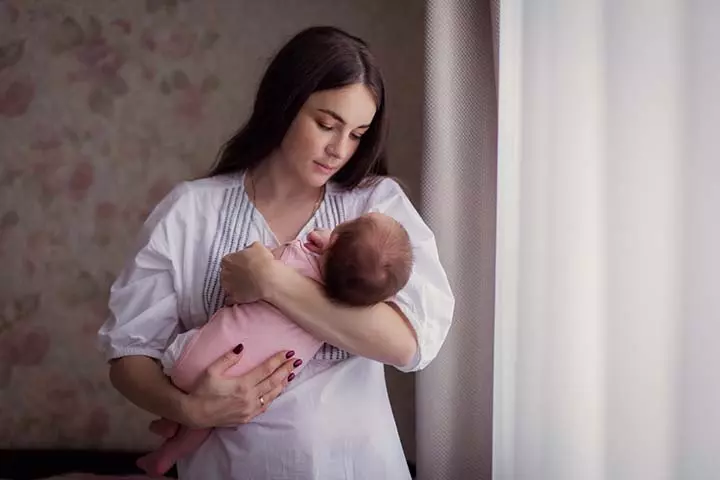
Besides interfering with oral, dental, and ear health, there are other scenarios where it is better to not give your baby a pacifier.
- Baby has trouble suckling: If you are having trouble establishing breastfeeding even after the first month, then pacifiers are not a good choice. They interfere with breastfeeding and eventually lead to nipple confusion. Pacifiers are also not ideal for babies that are unable to gain weight due to breastfeeding problems.
- Babies with facial anomalies: Some babies with defects such as cleft lip may not take to pacifiers well. Doctors also recommend against the use of pacifiers for babies that have undergone any face or mouth correction surgeries (14).
Introducing pacifiers may be easy, but how about discontinuing them at the right time?
When To Discontinue Pacifier Use?
Babies give up pacifiers on their own between two and four years of age. Most break the habit through peer pressure, and also because they are old enough to soothe themselves without pacifiers. The American Dental Association (ADA) considers pacifiers less habit-forming than thumb-sucking (11). Therefore, a baby will be able to quit the use of a pacifier without any problems.
However, some infants are hard to be separated from their pacifiers. In such cases, you need to intervene.
Cammie Diane, a mother and blogger, reflects on how her daughter gave up her pacifier independently. She says, “She took the pacifier easily, and it was her close companion for the next twelve months. She still nursed a lot. I still hardly slept. But it made life survivable. She began to refuse to take it after her first birthday, which ended her pacifier use. There were no tantrums or problems getting her to let go. One day, she was done, and that was it (i).”
How To Make A Baby Give Up Pacifiers?
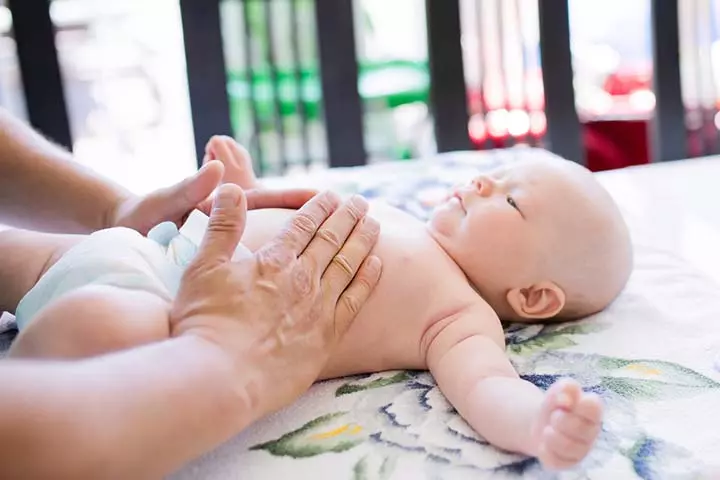
Here are some tips to make an infant stop using the pacifier (15) :
- Start reducing pacifier time: Cut down on the time the baby suckles a pacifier, or take it away from the baby for a fixed time in a day. If you face resistance, then distract the baby or involve him in an activity during that time frame. Gradually, cut down the time further, and soon you will notice that the infant becomes less dependent on pacifiers.
- Use other ways to soothe: If a baby uses a pacifier to fall asleep, then try alternative ways that could potentially soothe the infant to sleep. Try swaddling, warm bath, or gentle massage before bedtime to help the infant relax and sleep without the pacifier. Identify triggers when the baby tends to use the pacifier the most, like when upset, and replace the pacifier with other soothers.
- Make pacifiers distasteful: By 24 months, a baby can eat all vegetables (16). Try rubbing the nipple of the pacifier with some bitter gourd juice, or puree of any bitter vegetable, or vegetables that the baby dislikes. The idea here is to make the pacifier unappealing for the baby. Applying distasteful purees to the pacifier nipple is a neat trick when infants vehemently resist giving up the pacifier.
- Hide the pacifier, and tell a story: Infants older than 24 months love listening to tales. So, why not say that the tooth fairy took their pacifier away? Involve the entire family in the act, and the little one will be convinced that his pacifier is gone for good.
If the baby does not give up the pacifier until the age of four years, then you must take him to a doctor. Corrective measures through the use of counseling will help the little one give up pacifiers.
Now that you know all about pacifiers, we answer a few commonly asked questions.
Frequently Asked Questions
1. What if the baby refuses a pacifier?
It is okay for a baby to decline a pacifier. Make an attempt the next day or a few days later. If the baby opposes a pacifier even then, then you can give a gap and retry a few weeks later. Do not force-put the pacifier if the infant continues to refuse. Pacifiers are useful, but not compulsory.
2. Should I give a pacifier to a breastfed baby?
Yes, you can give a pacifier to a breastfed baby who is above a month old. But you can give it only when you are sure the baby is not hungry. If he is hungry, you need to breastfeed him. It helps prevent nipple confusion. Also, if the baby does not feed properly due to problems such as latching to the breast, then you can avoid pacifiers to reinforce only the breast nipple.
3. Can I use flavored pacifiers?
No, do not use any flavored, sweetened, and scented pacifiers. Also, do not dip the pacifier in sugar or honey before giving it to your baby. Flavors and sugars can exacerbate the chances of dental caries and may cause oral infections. Only use plain pacifiers (10) .
4. Can I put the baby to sleep with a pacifier?
Yes, you can place a baby on his back with a pacifier in his mouth. Pacifiers reduce the risk of SIDS (3) .
5. What if the pacifier falls off when the baby is asleep?
The baby will wake up and cry when a pacifier falls out from the mouth. You may have to put it back in his mouth for him to sleep again. However, if the baby does not wake up, then there is no need to put the pacifier back. Also, do not remove a pacifier from the mouth of a sleeping baby. It may startle him and disturb his sleep. Do not attach a pacifier to a baby necklace or toy to prevent it from falling while the baby is asleep. A string or toy can increase the risk of suffocation. Furthermore, if the pacifier has fallen on the ground, please wash and sterilize it in order to reduce the risk of infections.
6. How many pacifiers does a baby need?
There is no fixed number. Each baby is unique, and parents have to try a set of pacifiers before the baby settles down with one. Start with three different models of pacifiers and see which one the baby likes, and continue with it. Pacifiers also have an expiry date thus make a note of it. Once the pacifier reaches its expiry, dispose it off even if it seems to be in a good shape.
7. Will pacifier usage affect my baby’s teeth?
Use of pacifiers after the age of two years can cause misalignment of permanent teeth. It can cause a host of problems from weak bite force to inability to close the mouth. Pacifier usage below the age of two years is not associated with any dental problems.
8. Can a baby choke on a pacifier?
Yes. There are instances when a baby can choke on a pacifier. Follow the tips below to avoid a choking hazard.
- Do not allow your baby to chew hard on the pacifier, as it can break into pieces and be swallowed.
- The pacifier should be of the correct size. A small pacifier can easily enter the baby’s mouth and become a choking hazard.
- The pacifier should be made of only one piece of firm material and should not be detachable.
- There should be no string or cord attached to the pacifier.
9. Is it okay to give a pacifier after feeding?
Yes. You can give your baby a pacifier after feeding because they constantly need to suck on something. A pacifier helps soothe them (19). However, when the baby is hungry, ensure that you breastfeed them instead of giving them a pacifier, or it may cause nipple confusion.
10. How do I choose the correct pacifier for my baby?
Select a pacifier appropriate for your baby’s age, using the correct size from birth to six months and then switching to the next size. Opt for pacifiers made of high-quality, durable materials like natural rubber or latex, and regularly inspect them for signs of wear, discarding any with discolored or torn nipples. Make sure to sterilize pacifiers using appropriate methods. Experiment with different nipple shapes to find your baby’s preference. Most importantly, never use a pacifier as a food substitute or improvised alternatives like bottle nipples, as these can pose serious safety risks (20).
Many parents find pacifiers for babies useful to keep their ward calm. Premature babies may find them especially useful since pacifiers help develop their sucking reflex. However, pacifiers come with certain cons as well, including the risk of ear infections if the pacifier is not cleaned well. You also need to know when to introduce a pacifier to your baby and when to stop giving it to them. In addition, pacifiers come in different sizes and designs and for different age groups, so ensure you purchase one that best suits your baby.
Infographic: How To Clean And Maintain Baby Pacifiers?
It is vital to understand how to properly clean and care for baby pacifiers to ensure that babies can use them safely. Get insights on cleaning and sterilizing baby pacifiers in the infographic below. Illustration: Momjunction Design Team
Illustration: Benefits Of Baby Pacifiers And Tips To Stop Using Them
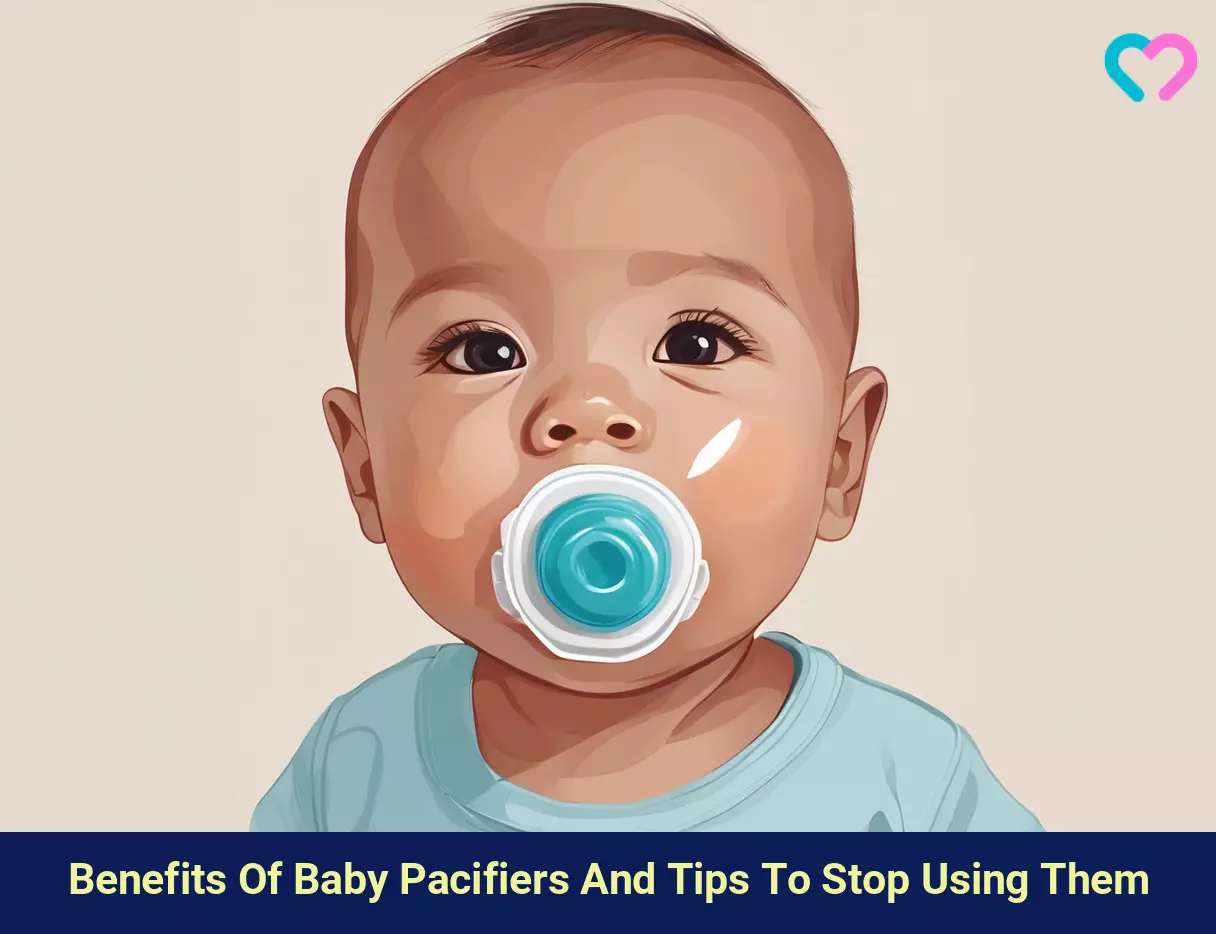
Image: Stable Diffusion/MomJunction Design Team
New parents may wonder if they should give their baby a pacifier to soothe them and keep them calm. Check out this interesting and informative video discussing the benefits and disadvantages of pacifiers to make an informed decision.
Personal Experience: Source
MomJunction articles include first-hand experiences to provide you with better insights through real-life narratives. Here are the sources of personal accounts referenced in this article.
i. Pacifiers and parenting: a post on one of the things I thought I knew before I had kids.http://www.cammiediane.com/2015/01/pacifiers-and-parenting-post-on-one-of.html
References
- Paediatr Child Health; (2003) Pacifiers (soothers): A user’s guide for parents.
https://www.ncbi.nlm.nih.gov/pmc/articles/PMC2791560/ - Pacifiers (soothers): A user’s guide for parents.
https://www.healthychildren.org/English/ages-stages/baby/crying-colic/Pages/Pacifiers-Satisfying-Your-Babys-Needs.aspx - Reduce the Risk of SIDS & Suffocation.
https://www.healthychildren.org/English/ages-stages/baby/sleep/Pages/A-Parents-Guide-to-Safe-Sleep.aspx - Colic Relief Tips for Parents.
https://www.healthychildren.org/English/ages-stages/baby/crying-colic/Pages/Colic.aspx - How to Calm a Fussy Baby: Tips for Parents & Caregivers.
https://www.healthychildren.org/English/ages-stages/baby/crying-colic/Pages/Calming-A-Fussy-Baby.aspx - Flying with Baby: Parent FAQs.
https://www.healthychildren.org/English/safety-prevention/on-the-go/Pages/Flying-with-Baby.aspx - Non-nutritive sucking for increasing physiologic stability and nutrition in preterm infants.
https://www.cochrane.org/CD001071/NEONATAL_non-nutritive-sucking-increasing-physiologic-stability-and-nutrition-preterm-infants - Heather L Sipsma et al.; (2017); Pacifiers and Exclusive Breastfeeding: Does Risk for Postpartum Depression Modify the Association?
https://journals.sagepub.com/doi/abs/10.1177/0890334417725033?url_ver=Z39.88-2003&rfr_id=ori%3Arid%3Acrossref.org&rfr_dat=cr_pub%3Dpubmed& - A M Vogel et al.; (2001); The impact of pacifier use on breastfeeding: a prospective cohort study.
https://pubmed.ncbi.nlm.nih.gov/11168872/ - Baby Bottle Tooth Decay.
https://www.mouthhealthy.org/all-topics-a-z/tooth-decay-with-baby-bottles - How to Use a Pacifier.
https://www.urmc.rochester.edu/encyclopedia/content.aspx?contenttypeid=1&contentid=981 - Cynthia R. Howard et al.; (1999); The Effects of Early Pacifier Use on Breastfeeding Duration.
https://publications.aap.org/pediatrics/article-abstract/103/3/e33/62200/The-Effects-of-Early-Pacifier-Use-on-Breastfeeding?redirectedFrom=fulltext - Am Fam Physician; (2009); Pacifiers: Benefits and Risks.
https://www.aafp.org/pubs/afp/issues/2009/0415/p681-s1.html - Thumbsucking and Pacifier Use.
https://www.mouthhealthy.org/all-topics-a-z/thumbsucking/ - Tips to Wean Your Child From Pacifiers.
https://health.clevelandclinic.org/tips-to-wean-your-baby-from-pacifiers - CPMC Food Allergy Care.
https://www.sutterhealth.org/cpmc/services/allergy/food-allergy - Pacifiers: Benefits and Risks.
https://familydoctor.org/pacifiers-benefits-and-risks/ - Risks and Benefits of Pacifiers.
https://www.aafp.org/pubs/afp/issues/2009/0415/p681.html - Pacifiers (soothers): A user’s guide for parents.
https://www.ncbi.nlm.nih.gov/pmc/articles/PMC2791560/ - How to Use Pacifiers Safely.
https://nationwidechildrens.staywellsolutionsonline.com/Library/Pediatric/NormalNewborn/1,981
Community Experiences
Join the conversation and become a part of our nurturing community! Share your stories, experiences, and insights to connect with fellow parents.
Read full bio of Dr. Priyam R. Sharma
Read full bio of Rohit Garoo
Read full bio of Dr. Ritika Shah
Read full bio of Shinta Liz Sunny





